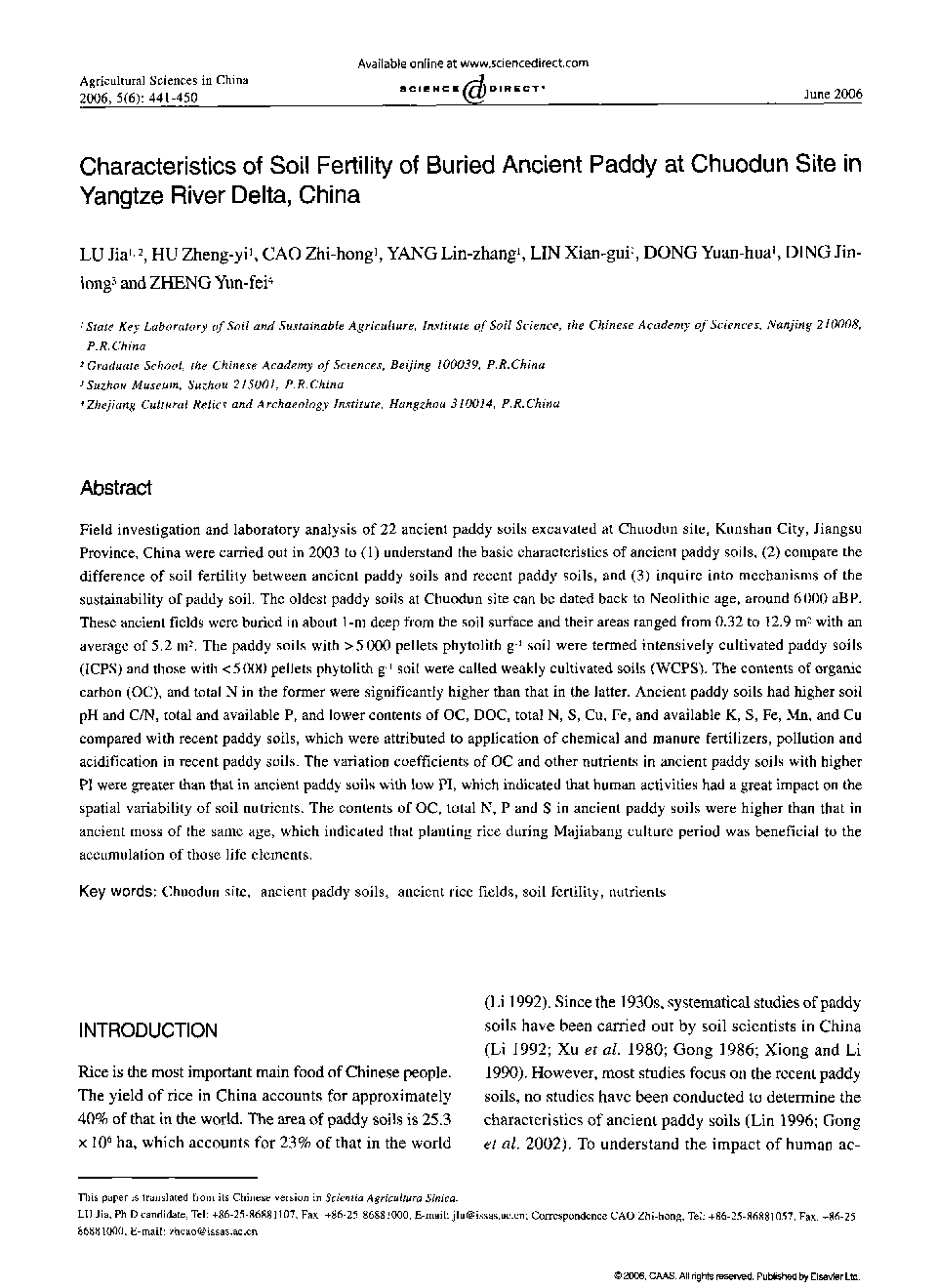| کد مقاله | کد نشریه | سال انتشار | مقاله انگلیسی | نسخه تمام متن |
|---|---|---|---|---|
| 4491036 | 1317804 | 2006 | 10 صفحه PDF | دانلود رایگان |

Field investigation and laboratory analysis of 22 ancient paddy soils excavated at Chuodun site, Kunshan City, Jiangsu Province, China were carried out in 2003 to (1) understand the basic characteristics of ancient paddy soils, (2) compare the difference of soil fertility between ancient paddy soils and recent paddy soils, and (3) inquire into mechanisms of the sustainability of paddy soil. The oldest paddy soils at Chuodun site can be dated back to Neolithic age, around 6000 aBP. These ancient fields were buried in about 1-m deep from the soil surface and their areas ranged from 0.32 to 12.9 m2 with an average of 5.2 m2. The paddy soils with >5000 pellets phytolith g−1 soil were termed intensively cultivated paddy soils (ICPS) and those with <5 000 pellets phytolith g−1 soil were called weakly cultivated soils (WCPS). The contents of organic carbon (OC), and total N in the former were significantly higher than that in the latter. Ancient paddy soils had higher soil pH and C/N, total and available P, and lower contents of OC, DOC, total N, S, Cu, Fe, and available K, S, Fe, Mn, and Cu compared with recent paddy soils, which were attributed to application of chemical and manure fertilizers, pollution and acidification in recent paddy soils. The variation coefficients of OC and other nutrients in ancient paddy soils with higher PI were greater than that in ancient paddy soils with low PI, which indicated that human activities had a great impact on the spatial variability of soil nutrients. The contents of OC, total N, P and S in ancient paddy soils were higher than that in ancient moss of the same age, which indicated that planting rice during Majiabang culture period was beneficial to the accumulation of those life elements.
Journal: Agricultural Sciences in China - Volume 5, Issue 6, June 2006, Pages 441-450